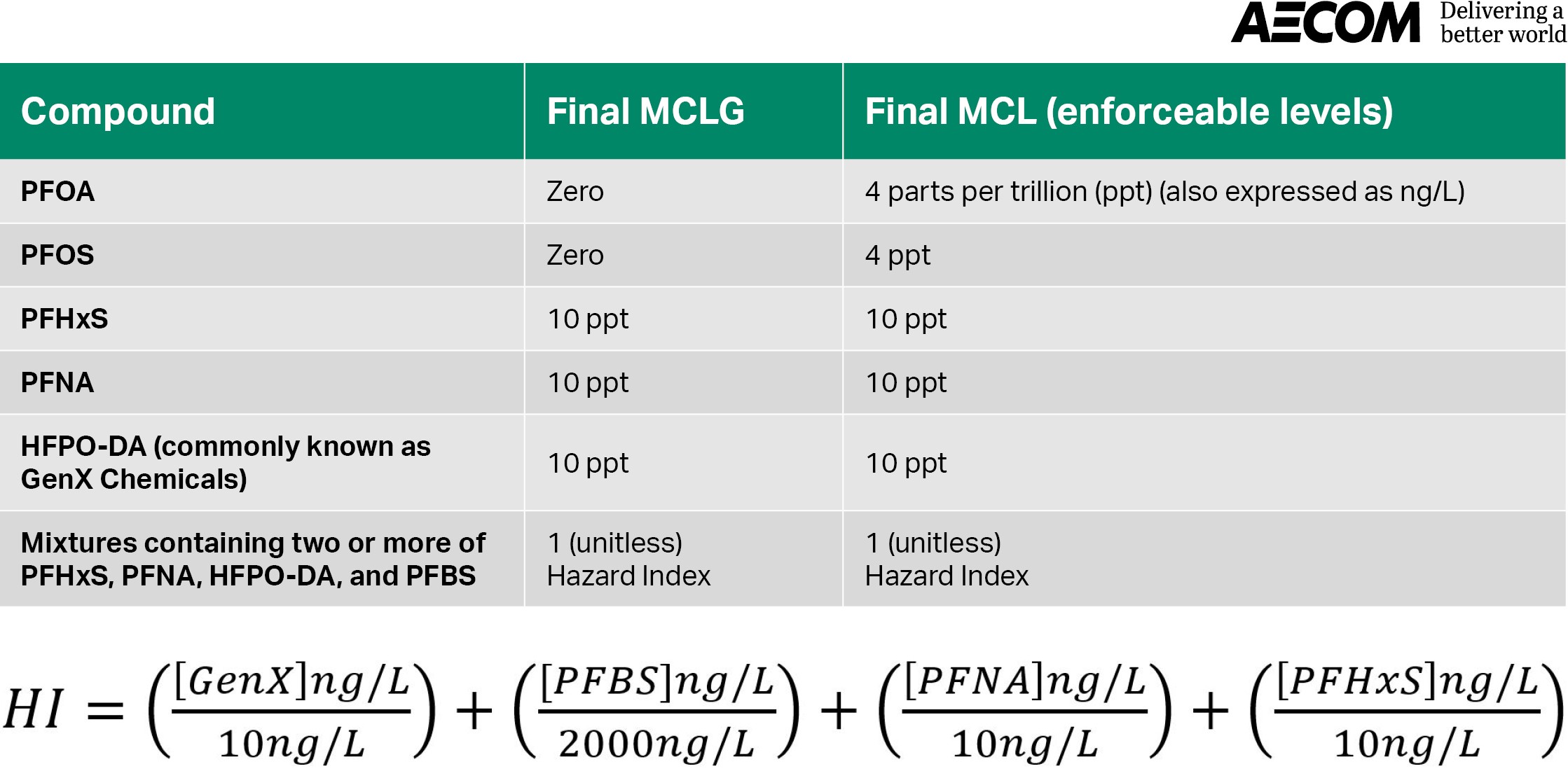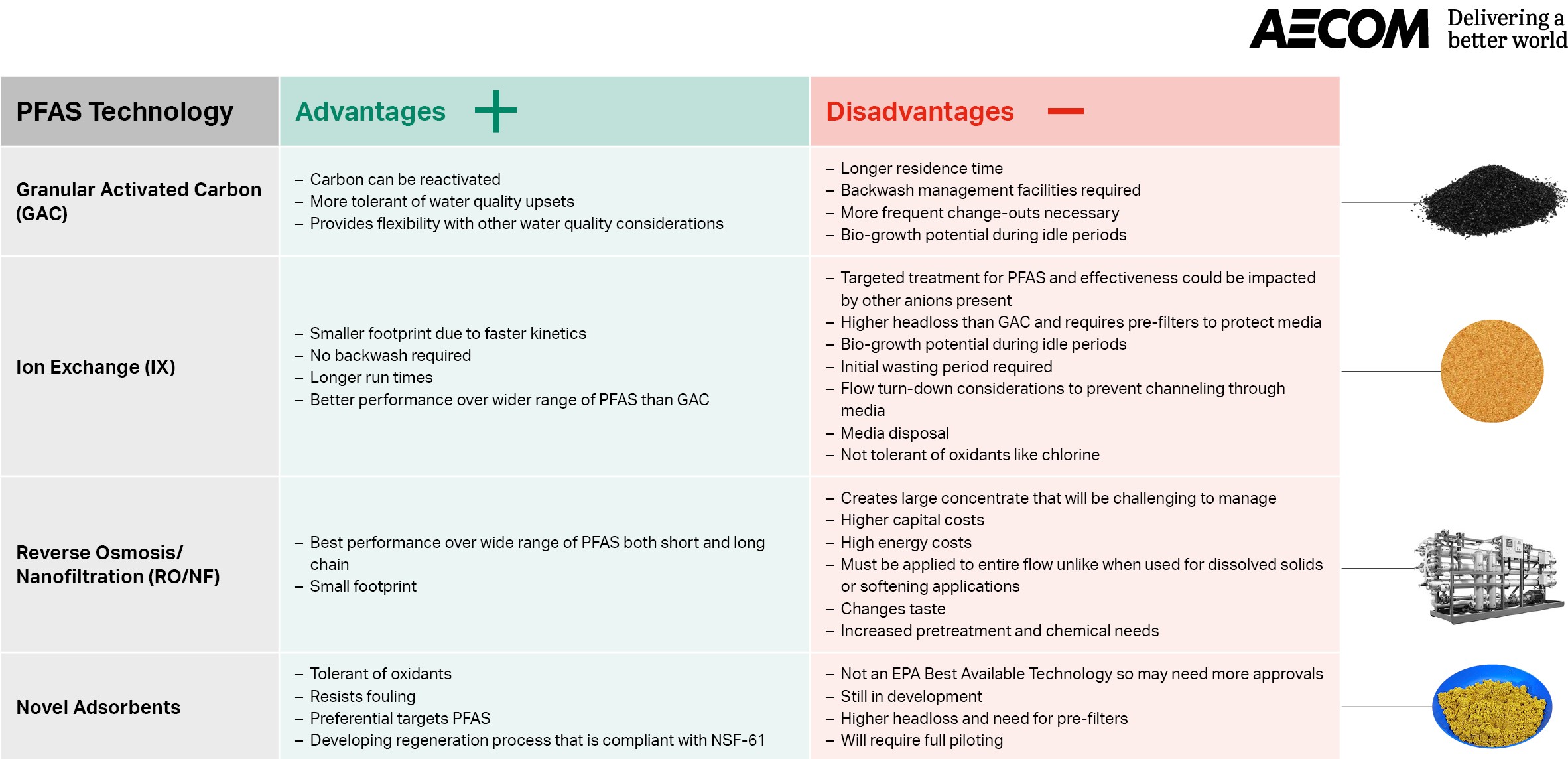PFAS are reshaping water treatment. Here’s how utilities can adapt.
The U.S. EPA’s first limits for PFAS are bold. To meet them, utilities must navigate new technologies, supply chain constraints, and a complex funding ecosystem, explains Rosa Gwinn, our Global PFAS Technical Lead.
With limits as low as 4 parts-per-trillion, the EPA’s new rules on PFAS in drinking water are stringent — and represent a public health and environmental victory. But they’ve also raised an urgent question for water utilities, namely, ‘How do we comply?’
The answer isn’t a straightforward one.
PFAS treatment is never one-size-fits-all, and the knowledge base among utilities is still growing. To comply with new regulations, utilities must navigate through researching numerous technologies and funding options to fit their unique needs. And they’ll need to do so quickly, with a 5-year compliance window and given a tightening supply chain and intense competition from peers.
For Good Measure
The EPA’s proposed regulations have three main mandates: to monitor, report, and reduce PFAS levels.
Regulations on PFOS and PFOA, two potentially carcinogenic compounds are clear cut: concentrations must not exceed four parts per trillion.
But for PFNA, PFHxS, PFBS, and GenX, the EPA has proposed a more complex approach and a new precedent for contaminants: a hazard index.
Using hazard indices, the EPA can group contaminants according to common health impacts and regulate their collective concentrations, which, in this case, differ from PFOS and PFOA. It’s likely that additional indices will follow as the health impacts of further PFAS compounds become more apparent.
That means monitoring technologies are key. Utilities must ensure that those technologies have the scope and flexibility to monitor as many PFAS compounds as possible—even those that are not currently regulated but soon could be, or those compounds that might transform into regulated PFAS.
And this raises a further question: if utilities find elevated PFAS concentrations, how do they best go about lowering them?

To the limits
Should utilities exceed the EPA’s limits, treatment strategies will come into play. And they’ll have an array of options to choose from. Blending source water can reduce PFAS levels at the other end. Granular activated carbon (GAC), reverse osmosis, and ion exchange, and other sorbent solutions can all remove PFAS from water sources. But each option has advantages and disadvantages.
GAC, for instance, is flexible for treating additional contaminants yet may require larger storage vessels and longer contact time than ion exchange. Conversely, Ion exchange has a smaller footprint and better performance across a range of PFAS, yet is not tolerant of oxidants like chlorine in the feed and may be more easily fouled. Newer solutions are continually being developed, and regenerable novel sorbents that are highly PFAS-specific are increasingly commercially available.
As utilities assess their options, they may also need to consider interim solutions. These can include seeking alternative water supplies or augmenting existing technologies, for instance, using GAC caps.
Ultimately, utilities will need insight into their unique context and needs to find the right, lasting solution. Water sources, facility footprint, hydraulics, electrical, and geotechnical information can all dictate the optimal choice. Cost-effective investment will therefore depend on developing and deploying new expertise to find that ideal solution.

A matter of time
Along with technology lies another challenge: time. With a 2029 deadline to comply, revamping facilities could prove daunting, especially given the demand the rule creates on the supply chain.
As of 2023, critical components for PFAS facilities were already experiencing up to 18-month backlogs. And as the demand for components skyrockets, delays will likely also rise steeply.
That means time is of the essence. Those first in line are more likely to meet compliance deadlines and lower costs as everyone competes for public funds—which are substantial.
Ranging from Infrastructure Investment and Jobs Act and the Inflation Reduction Act to the 2020 American Rescue Plan, utilities have many funding sources to choose from. Meeting the Justice 40 initiative requirements will prove critical in securing them—and historically underserved communities are seeing PFAS impacts.
As we work with clients to meet J40 and other requirements, we’re already seeing how funding optimization has become critical to bringing the first generation of treatment facilities to life. Familiarity with complex federal and state funding ecosystems will determine how quickly utilities can join this tide toward new tech.
The EPA’s new limits signal a new era of water treatment. Agility and technical expertise will determine how utilities adapt. The key is to not let upfront barriers delay action. Compliance is possible, especially so, if utilities act to create solutions now.
The three keys to compliance
1/ Understand the technology landscape
There is no silver bullet for PFAS treatment. Numerous solutions exist, each with their own benefits and limitations. Ultimately, the solutions must be tailored to each treatment facility and future-proofed for future PFAS regulations.
2/ Beat the supply chain
As new regulations drive demand for PFAS treatment, utilities will contend with rising prices and increased competition for critical components. Fast action is critical to getting ahead.
3/ Leverage the funding ecosystem
From the Inflation Reduction Act to the American Rescue Plan, extensive funding can support investments in PFAS treatment. The key is to master J40 and other requirements to maximize funding.
Want to read more insights from our PFAS specialists? Click here to explore our emerging contaminants expertise and case studies of current and past work.






